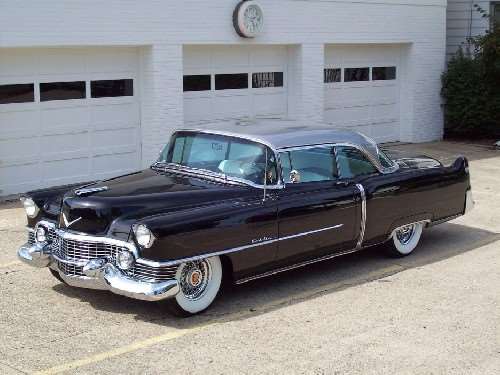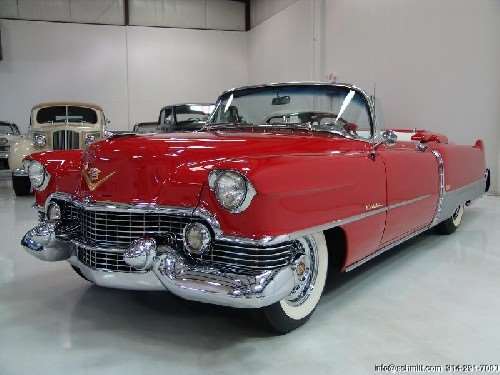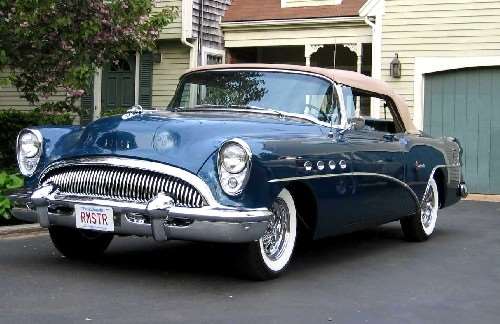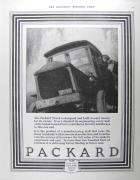|
Re: Year-end Leftover 1953 models
|
||||
|---|---|---|---|---|
|
Forum Ambassador

|
If figures are to be found on left-over 1953s I suspect you'll find them in Robert Neal's new book on the 51-54 Packards; I understand the book will be out soon.
Posted on: 2014/7/29 15:02
|
|||
|
||||
|
Re: Year-end Leftover 1953 models
|
||||
|---|---|---|---|---|
|
Home away from home

|
While waiting for Neal's book for those left over numbers, it's important to remember that there was a lot happening in the U.S. economy in early 1953. The Korean conflict was ending and the Fed was anxious to forestall inflation by tightening consumer credit. Defense contracts were also being terminated, so a major source of Packard's income suddenly took a dive. Packard and the other independents did not have the luxury of an in-house credit facilitator like GMAC and Ford Motor Credit as they supported the unprecedented flooding of the market with more cars than their dealers wanted. Remember that buying a car in 1953 on time meant a much larger down payment (perhaps 30 percent or more) and shorter terms for payment (averaging 24 months). Relying on community banks instead of an industry lender like GMAC, meant that the Packard or Nash buyer had some mighty distracting messages to look at those new attractively priced Chevys and Fords. Cadillac and Lincolns had the same advantages as their corporate cousins when it came to "Easy Payments". If you compared cars by price alone, Packard was no big bargain with their higher prices.
The one ace in Packard's hand was their clientele was a bit wealthier and able to pay cash rather than resorting to loans. For a year or two, the Packard legend of quality and value paid a needed dividend when the company needed it most. The production problems of 1954 and 1955 were just ahead and by that time, customer and dealer loyalty had worn dangerously thin, resulting in lots filled with leftover models that had to be deeply discounted. My car may have languished on a Virginia dealer lot for five or six months before being sold at a 30 percent discount.
Posted on: 2014/7/29 18:29
|
|||
|
||||
|
Re: Year-end Leftover 1953 models
|
||||
|---|---|---|---|---|
|
Home away from home

|
Hi
For Nance and Packard, 1953 might be titled "the season of our discontent begins". When faced with all the reversals DaveB845 enumerates, one wonders whether even an auto industry experienced president would have been able to cope much better. Over-production for various carmakers appears to have been common at the time, Kaiser-Frazer did so massively in 1949-50, re-serial numbering unused leftover 1949 models as 1950 models (still legal to do so at the time) to relieve the glut. Still, masses of leftover persisted, about 10,000 altogether. K-F only built the 1951 Frazer to utilized all those leftover old bodies piled up at Willow Run. They turned to a similar gambit at the beginning of 1952, marketing leftover 1951 models with minor trim changes as 1952 Virginians. And again for early 1954, the '54 Specials which were leftover 1953's with new front clips and tailights fitted, still carrying '53 dashes and the '51-'53 style rear window. Perhaps Nance could have torn a page from K-F's playbook, had '54 Clipper "sore thumb" tailight adapter units ginned up, bolted them to the rear fenders of leftover '53 Clippers, added other bits and pieces of trim to create the '54 looks, peddled them as '54 Clipper 200'S. One can only imagine how dealers must have reacted when the ordered '54's didn't appear but the factory kept pushing leftover '53's.....at heavily discounted prices. Small wonder the dealer organization was in turmoil. Steve
Posted on: 2014/8/1 8:59
|
|||
|
||||
|
Re: Year-end Leftover 1953 models
|
||||
|---|---|---|---|---|
|
Home away from home
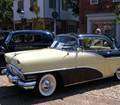
|
I sometimes have trouble telling a 1953 Packard from a '54, I must admit. I think in 1951 and 1952 the styling was new and sharp, especially compared to the preceding series. By 1953 it was getting a little long in the tooth. By 1954 Packard was juggling too many balls. Bringing in a new president, buying Studebaker (a catastrophe), and opening the Conner Avenue plant and switching production from the Grand Boulevard plant would have likely stressed a more solid company like Ford, let alone one that had inherited a mountain of debt thanks to Studebaker.
If there were a lot of left-over '53s, it might have benefitted Packard's bottom line, though as 58L8134 states correctly, Packard's dealer network must have been apoplectic. Packard was still strapped with its straight 8 at a time when almost all major manufacturers offered V-8s, which the buying public couldn't get enough of. And then in 1954 there was the styling issue ...
Posted on: 2014/8/1 9:33
|
|||
|
You can make a lot of really neat things from the parts left over after you rebuild your engine ...
|
||||
|
||||
|
Re: Year-end Leftover 1953 models
|
||||
|---|---|---|---|---|
|
Home away from home

|
by late 1953 the postwar car buying market fell like an anchor.. a nationwide recession was underway... the 53-54 Packard's were among the companies best products and were built like Swiss watches... the panel fit was simply the best in the business. Try closing a 51-54 Packard door sometime. They close and fit better than any Rolls Royce, Cadillac, or Lincoln ever built. The Cadillac's of the 1950's were not near of the same build quality... The Packard was smoother, quieter, and rode much better than any GM equivalent. The Cadillac did have a bit more prestige by the 1950's due to Packard's 200 and 110 and 120 diluted their luxury image quite a bit. The Buick's of the 1950's were some of the most beautiful designs ever conceived. The 1951 through 1954 Packard's high beltine styling was frowned upon for many years but now they are much more appreciated due to modern styling folks have borrowed from these styling concepts. Even though the 55 and 56 Packard's were true engineering marvels they were not even close to the build quality and nearly as reliable as the 51-54's.
Posted on: 2014/8/2 1:17
|
|||
|
||||

 (77.33 KB)
(77.33 KB)